The primary objective of the water management strategy employed in this project is to reduce the water usage of both the building occupants (including residents and industrial users) to a minimum level.
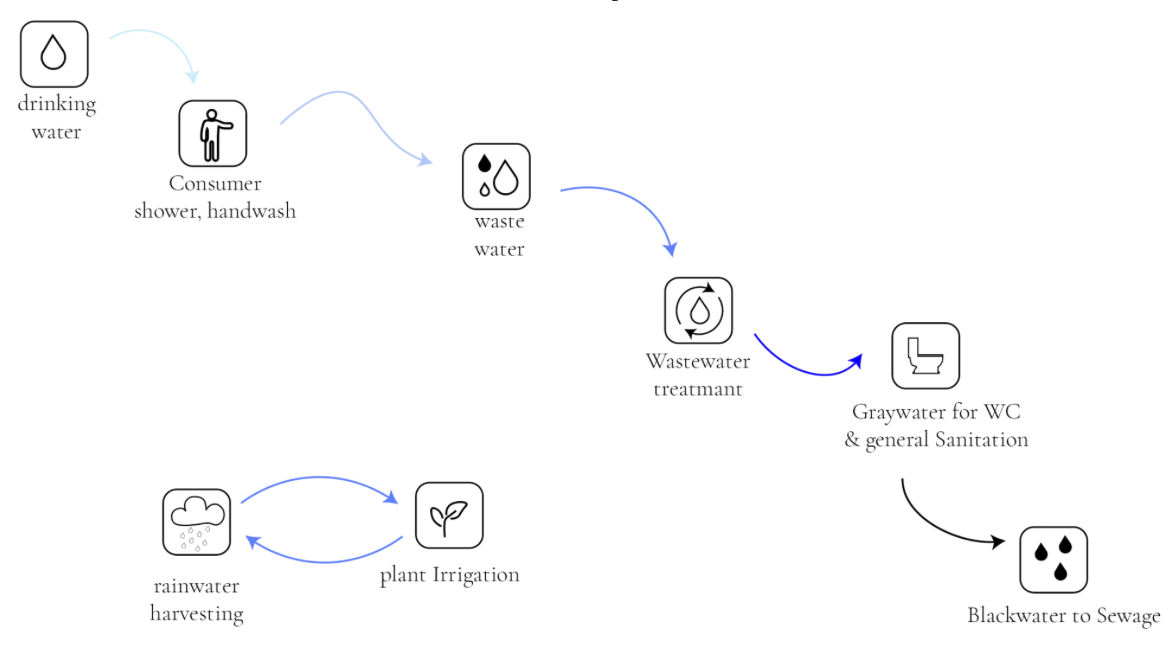
– concept-
One straightforward method for reducing water consumption involves implementing the following measures.

– Technical adjustments-
By setting a baseline for the overall water consumption in residential buildings, we can ascertain the extent of water reduction achieved across the housing units as a whole.

– per day for housing-
Implementing these technical adjustments on a comprehensive scale can result in savings of up to 48% in housing and approximately 60% in commercial and industrial sectors.

-per day comparison (L/day)-
Due to the implementation of technical strategies resulting in reduced water consumption, the building now requires a greater volume of graywater than it generates.

– Housing –
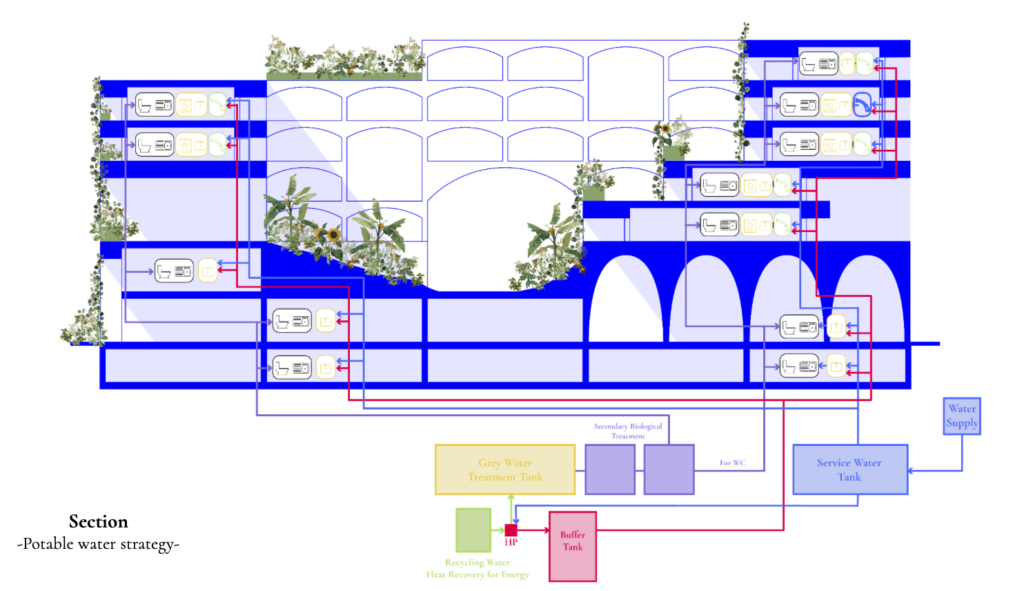
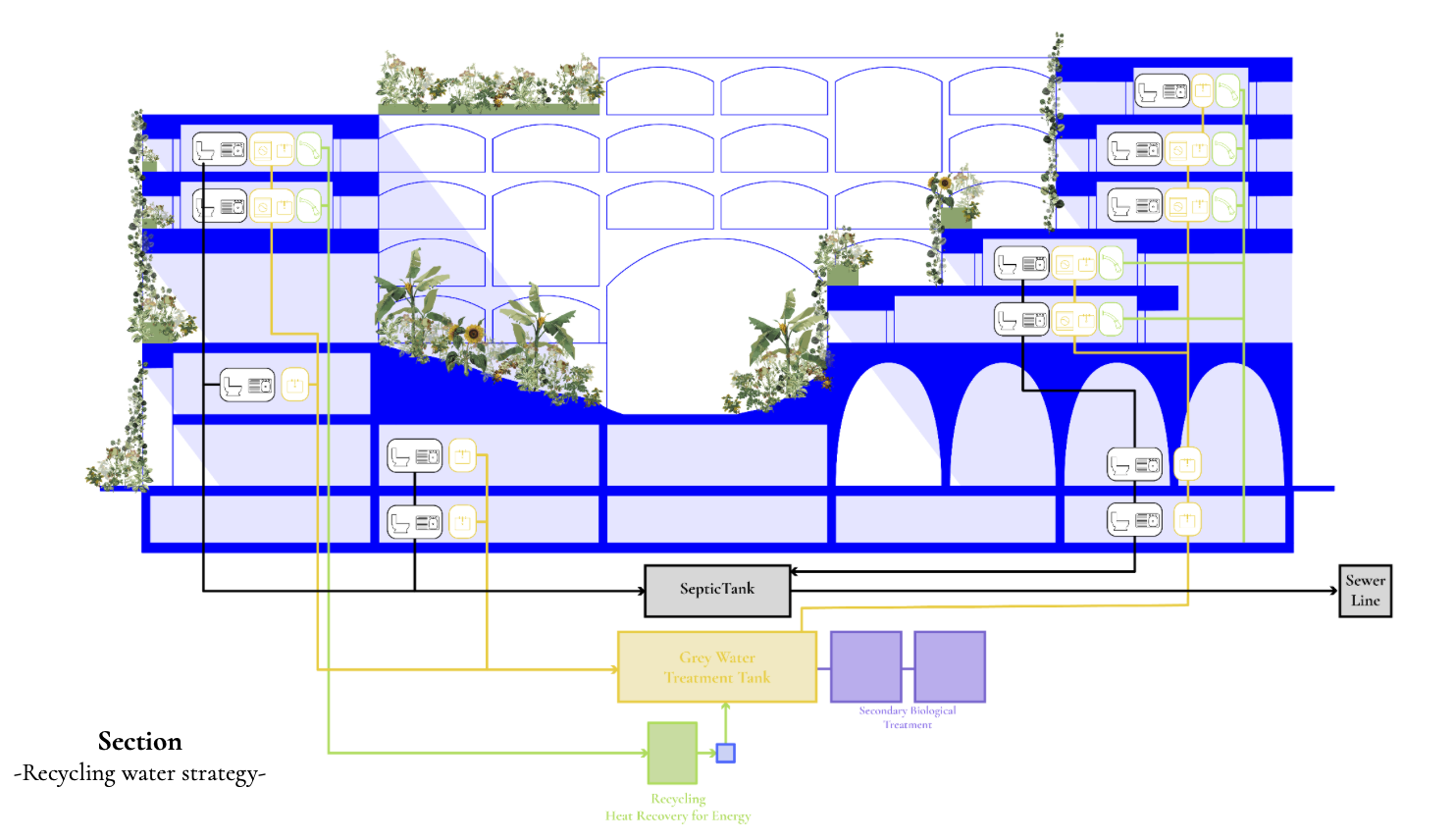
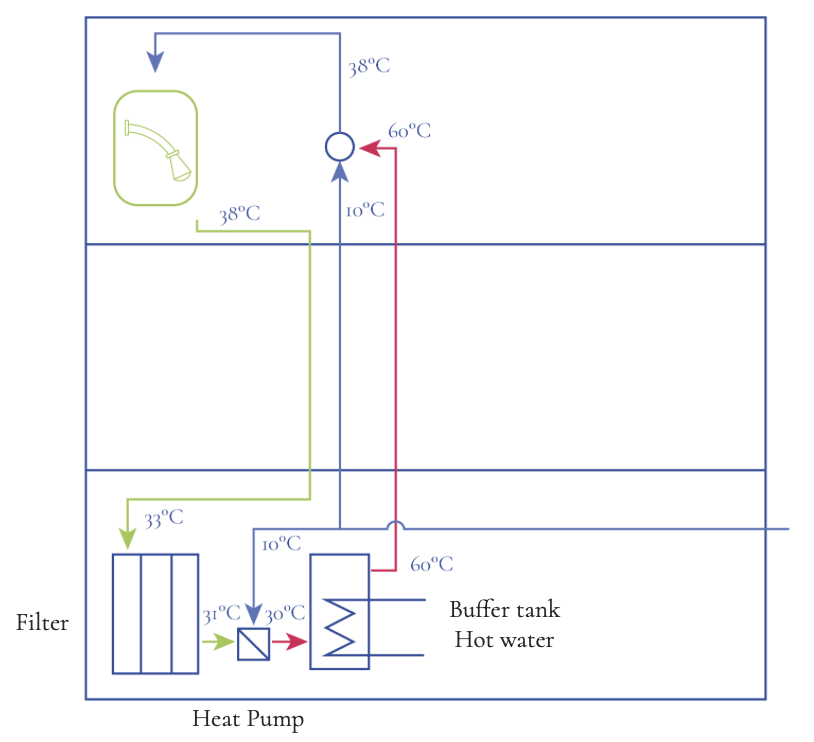
-Heat Recovery – Energy-
Regarding the green spaces, they are partly equipped with photovoltaic panels, pergolas, and greenhouses. These areas are meticulously designed and constructed to serve dual purposes: to retain water and to provide irrigation for the plants themselves.

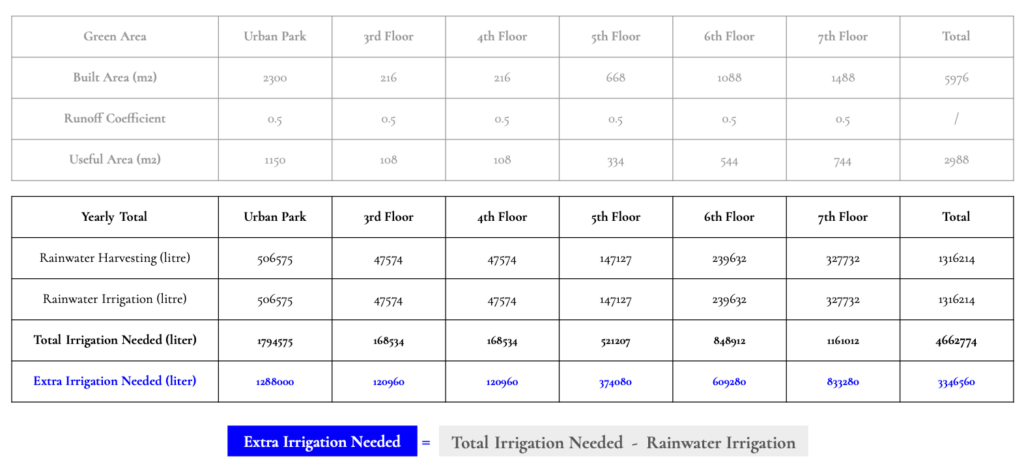
-Rainwater Harvesting & Extra Irrigation-
As a result of increased watering requirements, additional measures have been implemented to monitor and reduce water consumption in the green areas.
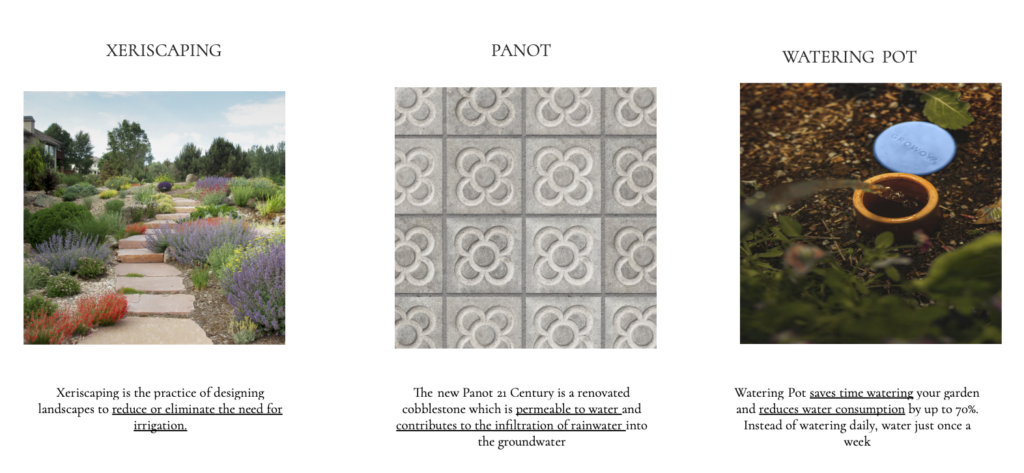
-Landscape-
After thorough deliberation regarding all essential requirements, it has been determined that the building necessitates a water storage tank with a capacity of approximately 80,000 liters. Additionally, the water tank can serve as a reservoir to mitigate fire hazards within the building or its vicinity.
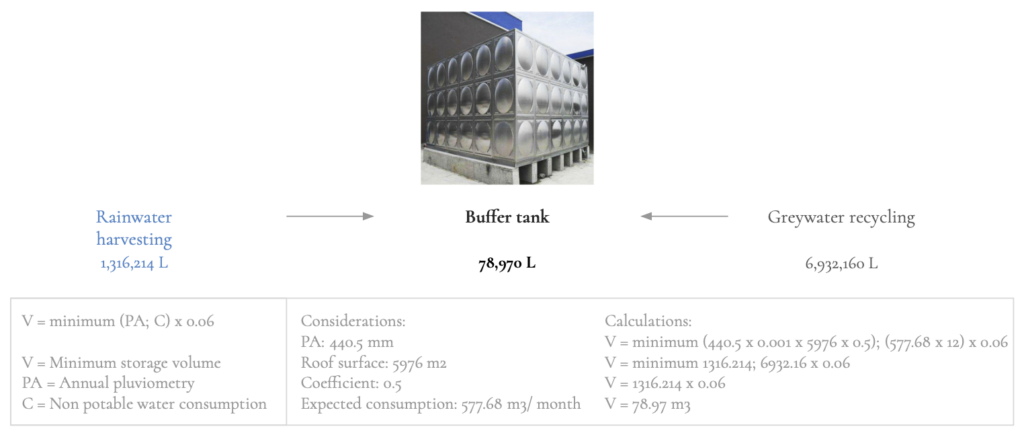
-size-


